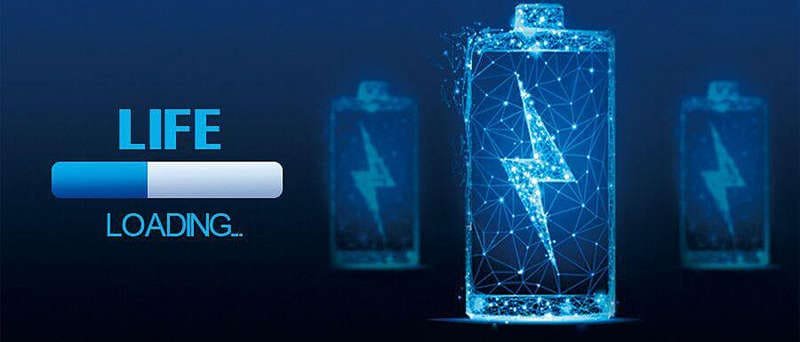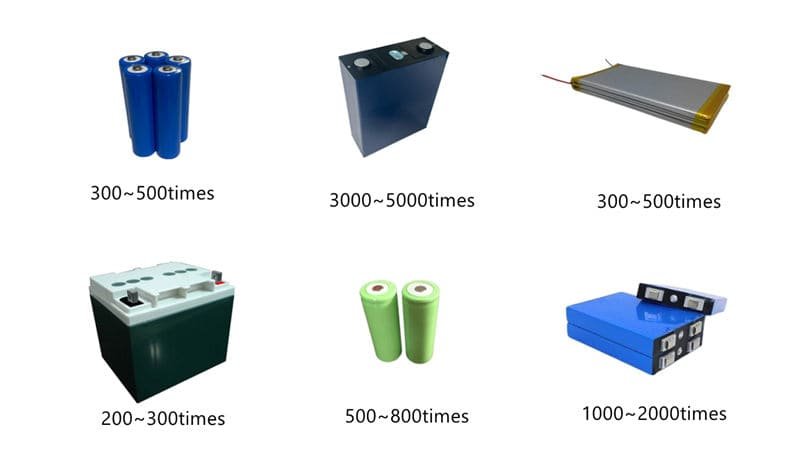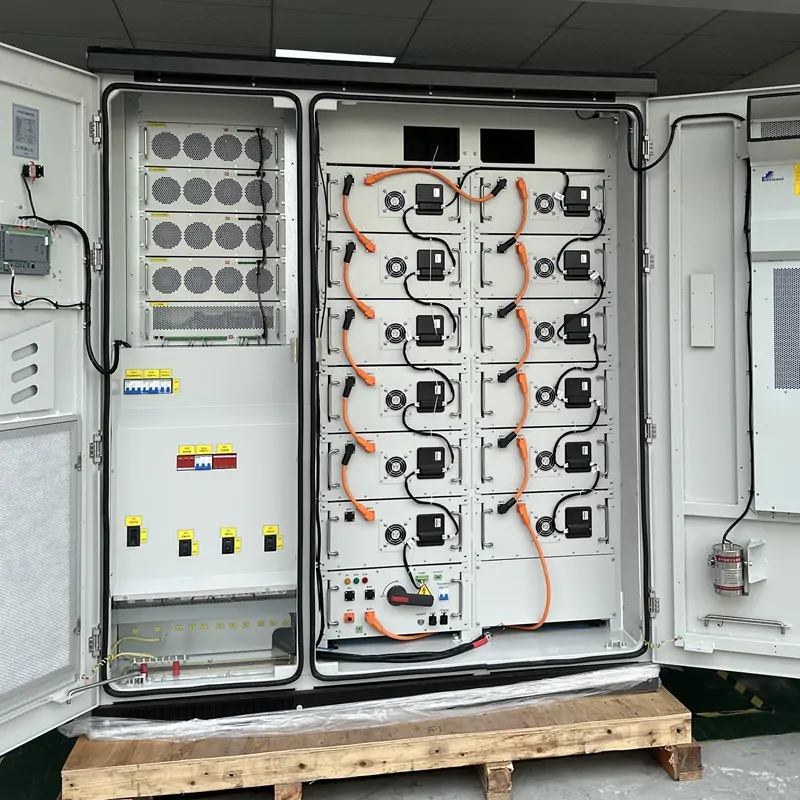What is Cycle Life of Battery?
In today’s technology-driven world, batteries power everything from smart phones to electric vehicles. But have you ever wondered why some batteries seem to last longer than others? The answer lies in a key concept – “battery cycle life”.
So what is cycle life of battery?
Battery cycle life refers to the number of complete charge/discharge cycles a battery can go through before its capacity significantly decreases. Simply put, it measures the number of times you can recharge a battery before it begins to lose its ability to hold a charge effectively.
Imagine your smart phone battery is a glass of water. When it’s fully charged, the glass is full. As you use your phone, the water level drops. Charging your phone is like refilling the glass. A complete cycle means you’ve used up a full glass of water, no matter how many times you’ve added to it in between.
Most manufacturers define the end of a battery’s cycle life as when it will only hold about 80% of its original capacity. This means that your device won’t run as long on a single charge as it did when it was brand new.
Let’s take a closer look at battery cycle life in all its aspects.
Table of Contents

Battery Life Cycle Meaning in Practical Terms
Understanding battery life cycle is about more than just numbers. It directly affects how long your device can run before it’s recharged, and how long your battery can last before it needs to be replaced. For the consumers, this means:
1. Device longevity: A battery with a longer cycle life usually means your device will last longer.
2. Cost-effectiveness: Fewer battery replacements means lower long-term costs.
3. Environmental impact: Longer-lasting batteries produce less e-waste.
How to Calculate Battery Cycle Life
Calculating battery cycle life is not as simple as it seems. It’s more than just counting the number of times you charge your device. Here’s why:
1. Partial Cycles: Most of us don’t always fully drain our batteries before charging. A full cycle can consist of several partial charges. For example, if you discharge a battery to 50% twice before fully charging it, that’s a full cycle.
2. Depth of discharge: How deeply a battery is discharged before charging affects its life. Generally, a shallower discharge will result in more total cycles over the life of the battery.
3. Operating conditions: Factors like temperature and charging speed can affect how quickly a battery degrades, impacting its cycle life.
So how do we calculate the cycle life of a battery?
For everyday users, there are a few ways to estimate the number of battery cycles.
1. Some devices, such as some brands of smart phones, have built-in tools to check battery health and cycle count.
2. Third-party apps can provide estimates based on your usage patterns.
3. You can track your charging habits manually, although this can be time-consuming and inaccurate.
Factors Affecting Battery Cycle Life

There are many factors that affect the cycle life of a battery, which are mainly categorized as follows:
1. Battery Chemistry
Different types of batteries have different inherent cycle lives. For example, lithium-ion batteries typically last longer than older nickel-based batteries.
2. Depth of Discharge (DOD)
The depth to which a battery is discharged before charging affects its life. Frequent discharging to very low levels (high DOD) may reduce overall cycle life.
3. Charge Rate
Fast charging, while convenient, may reduce battery life over time due to increased stress and heat.
4. Temperature
Temperature extremes, both hot and cold, can significantly affect battery performance and life. Higher temperatures are particularly harmful.
5. Usage Patterns
Frequent short-term charging may be less stressful to the battery than occasional deep discharging.
Comparison of Cycle Life of Different Battery Types
Different battery types have varying cycle life expectations. Here’s a comparison of some common types:
1. Lithium-ion Batteries
Standard lithium-ion battery: 300-500 cycles for most of them, some high-quality ones can reach about 1,000 cycles.
Lithium Iron Phosphate (LiFePO4) battery: 3000-5000 cycles, some special batteries for energy storage can reach more than 6000 cycles.
Lithium polymer battery: most 300-500 cycles, some high-end lithium polymer batteries will be higher.
2. Lead-acid batteries
Normal: 200-300 cycles.
Deep cycle: 400-600 cycles, but some high quality deep cycle lead-acid batteries can reach 1000 cycles.
3. nickel metal hydride (NiMH) batteries
500-800 cycles.
4. Sodium-ion batteries
1000-2000 cycles, still under development.
The above figures are estimates, the exact battery cycle life will vary according to the usage and product quality, you can refer to the data sheet given by the battery manufacturer.

Environmental and Economic Impact of Battery Cycle Life
Understanding battery cycle life is not only about equipment performance, but also has important environmental and economic impacts.
1. Reduced e-waste: Longer-lasting batteries mean fewer discarded devices and less e-waste in landfills.
2. Cost savings: While high-quality, long-cycle-life batteries may cost more up front, they can save money in the long run by being replaced less frequently.
3. Energy efficiency: As batteries age and lose capacity, they become less efficient, potentially increasing energy consumption.
How to Extend Battery Cycle Life?
Consider the following suggestions for extending the cycle life of your batteries.
1. Avoid extreme temperatures: Keep equipment away from heat sources and avoid leaving it in cold environments.
2. Partial charging is fine: It is not necessary to fully discharge the battery before charging.
3. Use the right charger: Always use the charger designed for the specific device.
4. Avoid fast charging if possible: Although convenient, frequent fast charging can put a strain on the battery.
5. Store at partial charge: If storing a device long-term, keep the battery at about 50% charge.
Battery Cycle Life Requirements in Different Applications
Battery cycle life requirements for different applications:
1. Consumer electronics: Smart phones and laptops typically require 300-500 cycles to meet an average lifespan of 2-3 years.
2. Electric Vehicles: Electric vehicle batteries are designed for 1,000-2,000 cycles and are intended to last 8-10 years or more.
3. Renewable energy storage: Grid storage batteries typically require 4,000+ cycles to be economically viable over a 10-20 year lifespan.

Conclusion
Battery cycle life is the key to the longevity of electronic devices. Currently, lithium-ion batteries, especially lithium iron phosphate (LiFePO4) batteries, excel due to their high cycle count and stability. The key to extending battery life is proper use and maintenance: avoiding extreme temperatures, moderate charging and discharging, and using the right charger. These simple measures not only save money, but also reduce e-waste. As technology develops, the cycle life and performance of batteries are expected to improve even further in the future. But no matter what, understanding and using batteries properly is always the key to extending their life. By using them wisely, each of us can benefit from longer-lasting, more reliable battery performance.
FAQ
1. What does 500 cycles mean for batteries?
The 500 cycles of a battery does not simply mean 500 charges. It actually refers to 500 complete cycles of discharging and charging. A complete cycle is when a battery is fully discharged from a fully charged state and then fully recharged again, regardless of how many partial recharges it has undergone in between. For example, if you discharge a battery to 50% twice before fully recharging it, this would only count as one full cycle.
2. What is a good battery life cycle?
The standard for “good” cycle life varies by battery type and application. For consumer electronics such as smart phones, 300-500 cycles are usually considered acceptable. High-performance lithium-ion batteries used in electric vehicles and other applications often target 1,000-2,000 cycles. Lithium iron phosphate (LiFePO4) battery, under ideal conditions can even reach 3000-5000 cycles or more. However, the actual performance will be affected by the way of use and environmental factors and different.
3. What is the life cycle of batteries?
The life cycle of a battery covers the entire process from raw material extraction, manufacturing, use and eventual recycling or disposal. Understanding this complete cycle is critical to assessing the environmental impact and sustainability of batteries. Notably, the European Union has recently proposed new battery regulations that plan to require in the future that high-capacity batteries (such as those used in electric vehicles and energy storage systems) provide a carbon footprint statement covering their entire life cycle, as well as a “battery passport” system to track the life cycle of each battery. These measures are intended to improve sustainability across the industry by providing a comprehensive understanding of the life cycle of batteries.
4. What is the difference between cycle life and life cycle of a battery?
Although the terms look similar, they refer to different concepts:
Cycle life refers exclusively to the number of charge/discharge cycles a battery can complete during its lifetime. For example, a battery with a cycle life of 500 cycles could theoretically complete 500 full charge/discharge cycles while maintaining an acceptable level of performance.
Life cycle covers the entire “life” of a battery, from raw material extraction, manufacturing, use (including its cycle life), to final recycling or disposal. This concept is broader and covers the full range of environmental and economic impacts of batteries.
In short, cycle life is an important indicator of the use phase of the life cycle, while life cycle focuses on the entire existence of the battery and its broader impacts.






